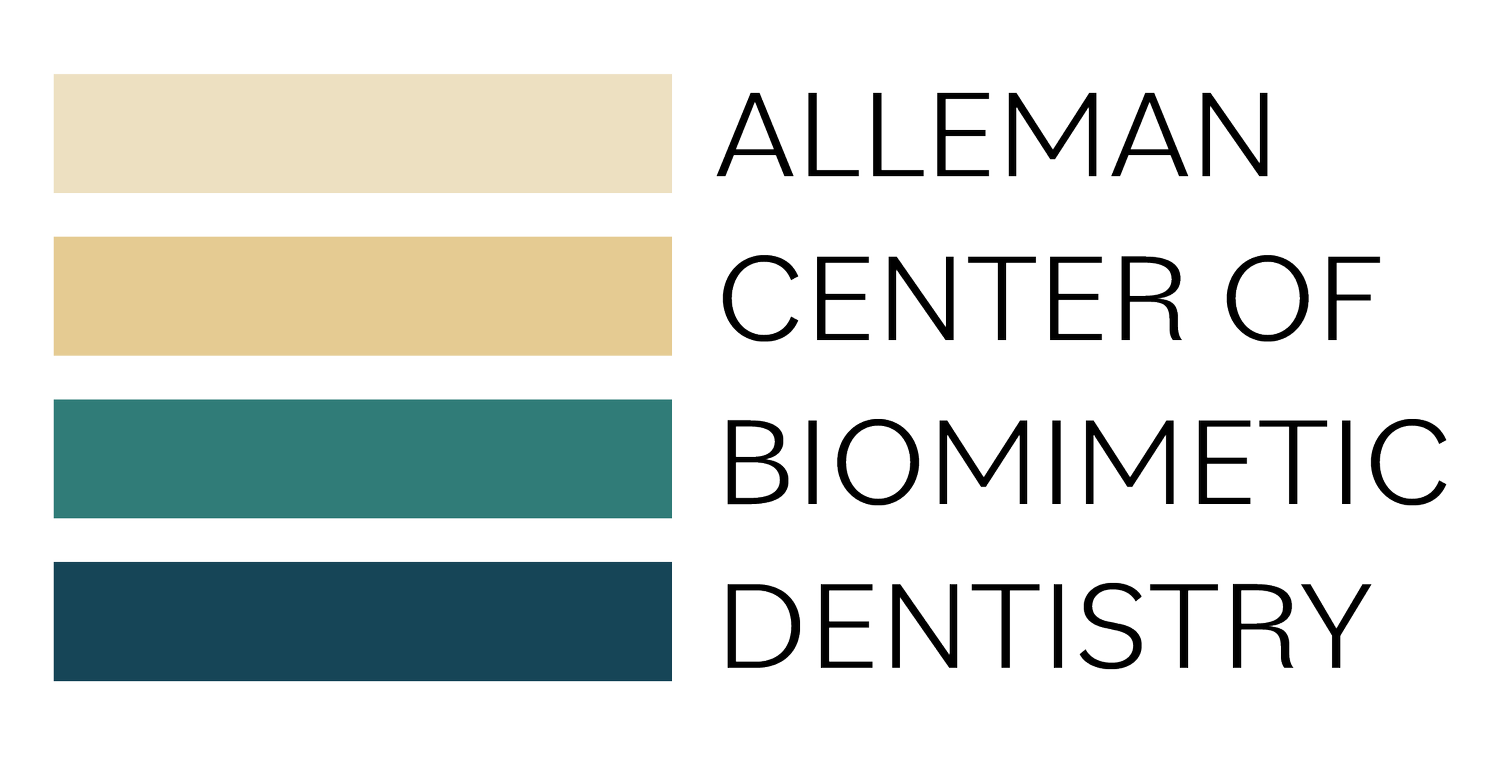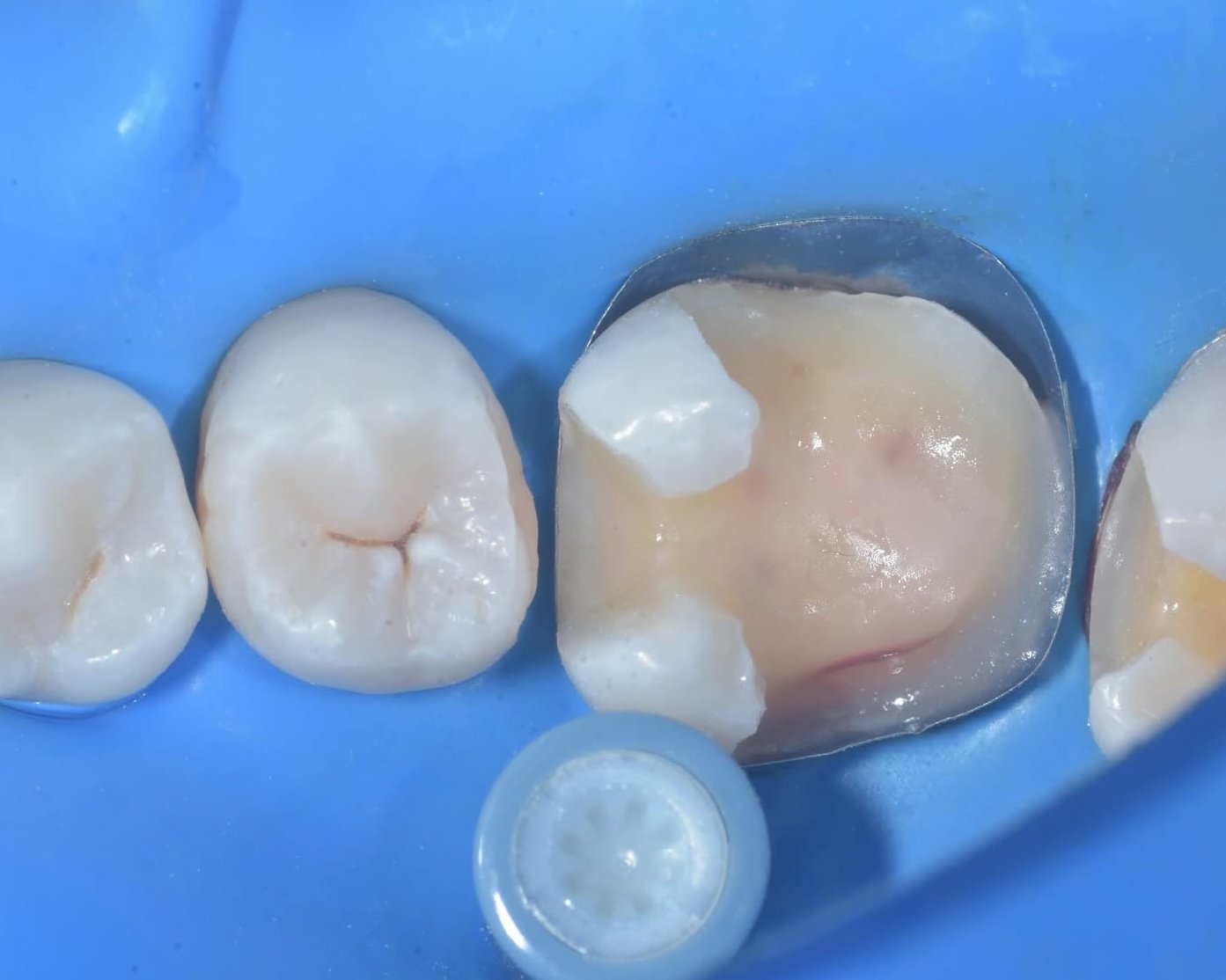Lesson 3: Immediate Dentin Sealing (IDS) and Resin Coating (RC)
When researching techniques to reduce post operative sensitivity for his patients, Dr. David Alleman identified immediate dentin sealing and resin coating as key factors in a long-term, asymptomatic bond. These techniques are the basis of Lesson 3 of his Six Lessons Approach to Biomimetic Restorative Dentistry, a complete set of protocols that doctors can use to predictably restore teeth using advanced adhesive principles.
Lesson 1 and Lesson 2 of the Six Lessons Approach outline predictable treatment of deep caries, treating different types of cracks in teeth and structural analysis. The Six Lessons Approach is a hierarchy, with Lesson 1 and Lesson 2 being more important than Lesson 3. Biomimetic dentistry is a bottom to top approach, so Lessons 1 and 2 treat pathologies to create a stable foundation for the restoration. Only after that can you proceed with Lesson 3 and begin restoring the tooth by bonding to dentin.
Immediate dentin sealing and resin coating is shown in this case by Dr. Davey Alleman, DMD.
Margin leakage in dental restorations
Marginal leakage around composite restorations and traditional crowns is not only a cosmetic concern, but a pathological concern as well. Staining around margins shows the gap between a tooth and the restorative material, which allows bacteria to enter under the restoration and fails to support the surrounding tooth structure, increasing a tooth’s risk of cuspal fracture from vertical and horizontal cracks. Biomimetic dentistry uses immediate dentin sealing and resin coating to create a margin smaller than a bacteria that mimics the strength of the dentin-enamel junction, eliminating leaking margins and protecting the tooth’s health long-term.
The initial photo in the restoration shows a distinct margin between the composite and the remaining tooth. The final restoration shows a biomimetic margin, so small that bacteria cannot enter underneath. Case by Dr. Davey Alleman, DMD.
How to seal exposed dentin
Sealing exposed dentin requires specific techniques and understanding of the materials, but the additional training and time are worth the increased quality of restorative outcomes. Exposed dentin is a top cause of post-operative sensitivity, poor bond strength for dental restorations and necrosis of the pulp from repeated reinfection. Dr. David Alleman’s Six Lessons Approach outlines predictable protocols to seal exposed dentin and greatly improve patient outcomes by eliminating post operative sensitivity and failing restorations.
Lesson 3 of the Six Lessons Approach seals exposed dentin, eliminating one of the leading causes of post-operative sensitivity. Case by Dr. Davey Alleman, DMD.
How to choose a dental bonding agent
Dental bonding agents, also known as dental bonding systems, were first developed in the 1950s, but only in the past two decades have these materials shown superior results to traditional retention form. Today practitioners are presented with endless options for dental bonding agents, but not all systems are created equal. At the Alleman Center, our goal with biomimetic dentistry is to achieve a bond to dentin that mimics the tooth’s natural bond to itself at the dentin-enamel junction, which is 30-50 MPa. Bonds at this strength have been shown to withstand the forces of occlusion and stay bonded for over 20 years. In our training programs, we teach doctors how to understand the research behind dental bonding systems, how to avoid misleading marketing and the protocols to maximize the effectiveness of dental bonding systems.
Your choice of dental bonding system can mean the difference between a long-lasting restoration and a bond that fails before the patient even leaves your office. Case by Dr. Davey Alleman, DMD.
Primers vs Adhesives
Dental primers and dental adhesives are often marketed as the ultimate solution for adhesive restorations, but as with any material on the market, understanding the research behind these materials and the best techniques for their use is key to long-term restorative success.
While some dental bonding agents combine the priming and adhesive step, gold standard bonding systems like Kerr OptiBond FL, Kuraray Clearfil SE Bond and Kuraray Clearfil SE Protect are two- and three-bottle systems. Research has shown that, for currently available materials, breaking up the priming step (preparing the dentin for bonding) and the adhesive step (bonding to the dentin) achieves the highest bond strengths when paired with the appropriate techniques.
The priming and adhesive steps are both necessary to create a Biobase, but how you use these materials is just as important as the materials themselves. Case by Dr. Davey Alleman, DMD.
Hierarchy of Bondability
A common misconception of composite shrinkage is that composite moves towards the light source when polymerizing, but it has instead been shown (Cho BH, Et al. Effect of interfacial bond quality on the direction of polymerization shrinkage flow in resin composite restorations. Oper Dent, 2002, 27, 297-304) that composites shrink towards the most highly bondable surface. While the outcome is often the same in restorative dentistry — gaps under a restoration — understanding why the gap occurs there helped Dr. David Alleman develop his concept of the Hierarchy of Bondability.
The Hierarchy of Bondability states different parts of the tooth establish the hybrid layer at different strengths and at different times because of the varying conditions and locations of the dentinal hard tissue. Understanding this concept is essential to adhesive dentistry because gaps from polymerization shrinkage can result in post-operative sensitivity from exposed dentin, crack formation from unsupported tooth structure and restoration failure from large debonded areas of composite.
Use of pink-staining caries detector dye in this case by Dr. Davey Alleman, DMD helps show the different bonding substrates and the Hierarchy of Bondability.
Decoupling with Time
Where the Hierarchy of Bondability clarifies one of the challenges of adhesive dentistry, Decoupling with Time offers the solution. Another concept developed by Dr. David Alleman during his research into advanced adhesive dentistry and his Six Lessons Approach to Biomimetic Restorative Dentistry, Decoupling with Time overcomes the Hierarchy of Bondability by giving slow maturing bonds a head start before increasing the polymerization stress. This improves marginal integrity.
Decoupling With Time is especially important for cases with deep pathologies where different substrates are being bonded to. Case by Dr. Davey Alleman, DMD.
Immediate Dentin Sealing
Immediate dentin sealing uses the dental bonding system to seal exposed dentin. If using a gold standard adhesive with the Six Lessons Approach protocols, doctors can achieve a biomimetic bond, similar to the strength at which a tooth is bonded to itself (30-50 MPa). This is the first step in creating a biobase, the dentin replacement, of a biomimetic restoration.
Watch this episode from Dr. David Alleman’s Six Lessons Approach Podcast to learn more about Immediate Dentin Sealing.
Resin Coating
Equally important as immediate dentin sealing, resin coating uses flowable composite to begin the bond to dentin without stressing the developing hybrid layer during polymerization. When done with the best materials and protocols, resin coating can increase the strength of a bond to dentin by 400%. This step creates the “secure bond” (Jayasooriya PR, Pereira PNR, Nikaido T, Tagami J. Efficacy of a Resin Coating on Bond Strengths of Resin Cement to Dentin. J Esthet Restor Dent 2003 15(2) 105-113) to dentin, which means any restorative failures happen above the bond, in the restorative material, rather than below the bond in healthy tooth structure.
Resin coating is one of the Six Lessons Approach techniques that creates the Biobase, the foundation of a biomimetic restoration. Case by Dr. Davey Alleman, DMD.
Lesson 3 of the Six Lessons Approach is one of the most critical steps in a successful adhesive restoration. By mimicking a tooth’s natural bond to itself (mimic nature = biomimetic) biomimetic dentistry has been shown to create restorations that last over 20 years without failure or post-operative symptoms. To learn each step in a biomimetic restoration with leaders in the field, join Dr. David Alleman, Dr. Davey Alleman and the Alleman Center team at one of our upcoming biomimetic dentistry training programs.
The Alleman Center did not receive any financial contributions from manufacturers for mentioning specific products in this post. Learn more in our financial support disclosure.














